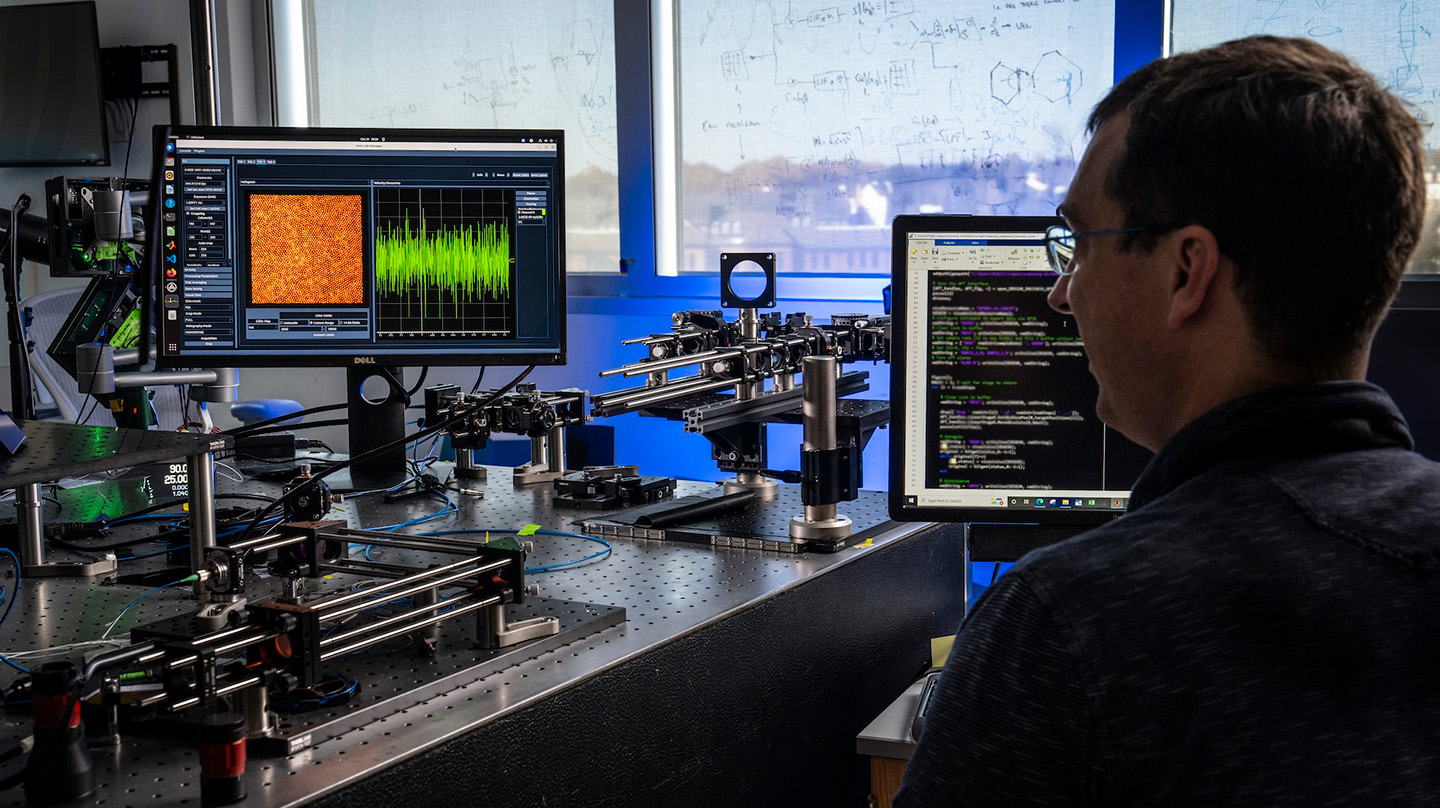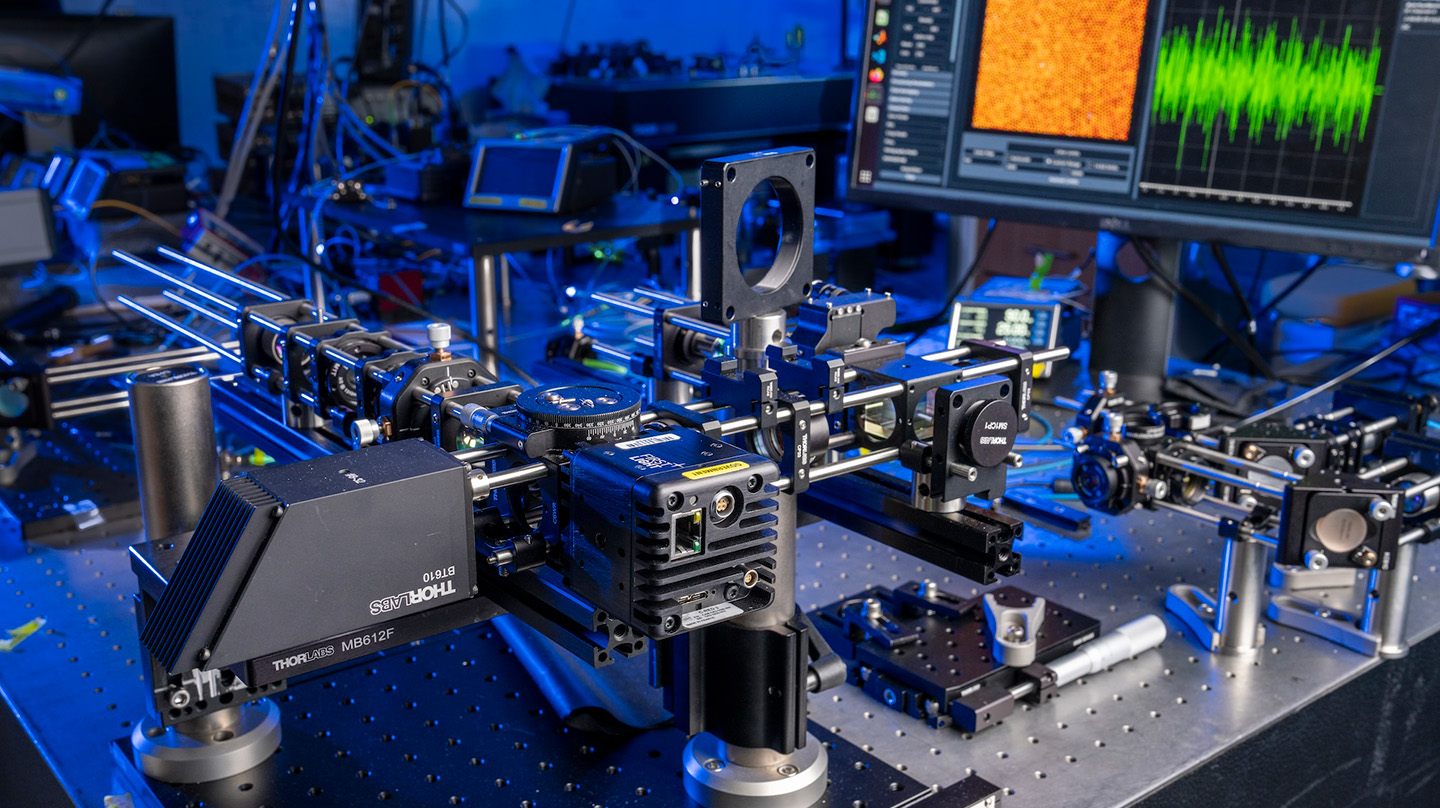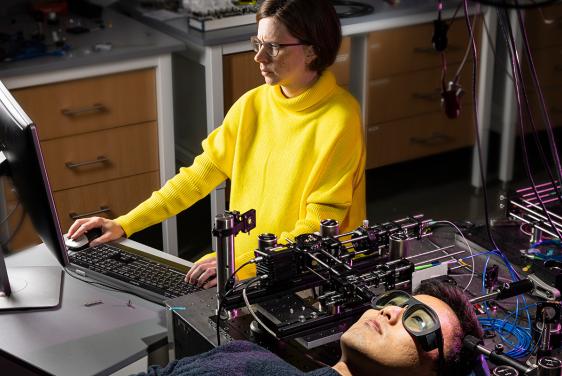Press Release
A New Path to Noninvasive Brain-Computer Interface
Controlling a computer with your mind was once pure science fiction, but it’s now plausible thanks to brain-computer interface (BCI) technology. Today’s BCI systems have achieved extraordinary advancements to control complex machines through thought, yet there is still one major obstacle — identification of a novel signal that can be recorded through your scalp and skull.
Researchers at the Johns Hopkins Applied Physics Laboratory (APL) in Laurel, Maryland, and the Johns Hopkins School of Medicine in Baltimore have achieved a breakthrough in noninvasive, high-resolution recording of neural brain activity. In a paper published in Scientific Reports, the team demonstrates that neural tissue deformations may provide a novel signal for brain activity that has the potential to be leveraged for future BCI devices.
APL’s research was part of the Defense Advanced Research Projects Agency’s Next-Generation Nonsurgical Neurotechnology program.
“Today, the highest impact BCI technologies require invasive surgical implants to record and decode brain activity,” said Mike Wolmetz, program manager for Human and Machine Intelligence at APL. “There are only a handful of nonsurgical methods, all of which have significant and fundamental limitations in spatial resolution, temporal resolution, signal-to-noise ratio and form factor. Our findings present the foundations for a new approach that could significantly expand the possibilities for nonsurgical BCI.”
BCI technologies work by recording neural activity associated with a function such as speech, movement or attention, and then interpreting that activity, often to control an external device without having to move a muscle.
Controlling complex systems without surgical implants could have broad applications that benefit a wider population. Today, BCI is limited to clinical cases because of its invasive nature. Approximately 50 people have had a BCI implanted.
“There are two challenges to realizing a noninvasive BCI device: identifying a signal in the brain that could provide insight into when and where neural activity occurs, and demonstrating the ability to record this signal through the scalp and skull of a person,” said David Blodgett, the principal investigator for the project and a chief scientist at APL.
The team sought to address the first of these challenges by developing a digital holographic imaging (DHI) system to identify and validate the signal as tissue deformation that occurs during neural activity. Tissue deformation is only tens of nanometers in height, so the DHI system was developed with sensitivities at the nanometer scale.
The DHI system operates by actively illuminating the tissue with a laser and recording the light scattered from the neural tissue on a special camera. This information is processed to form a complex image of the tissue from which magnitude and phase information can be precisely recorded to spatially resolve changes in brain tissue velocity. Numerous fundamental tests were conducted over several years to ensure the signal the team identified was in fact correlated to when neurons fired.


